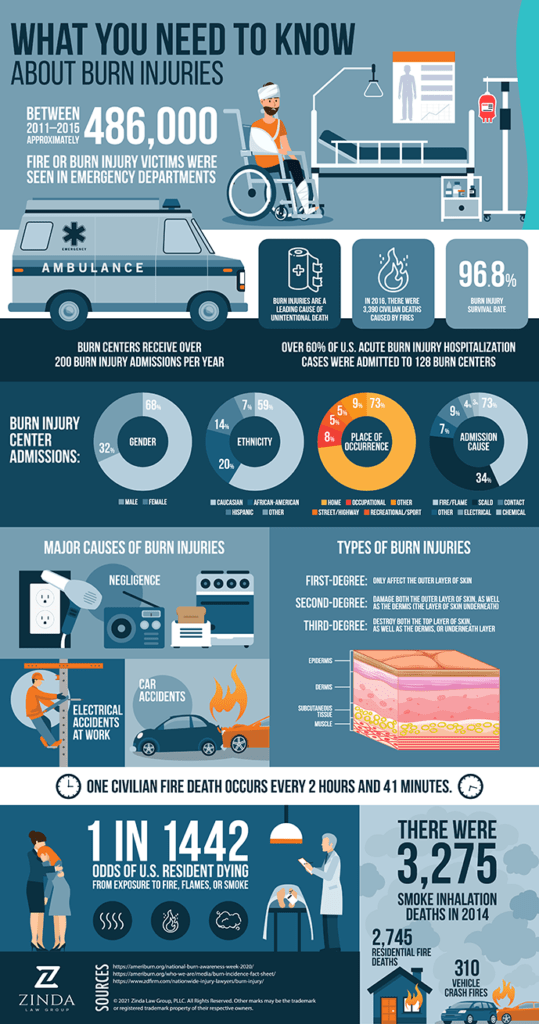CALL (888) 314-6671 TO SPEAK WITH A BURN INJURY INJURY LAWYER IN AUSTIN FOR FREE
Burns are a painful type of personal injury to the flesh and the more serious types of burns can even affect muscles, bone and blood vessels. Zinda Law Group is an established personal injury firm with experience handling burn injury cases in Austin. We understand that individuals can have physical and emotional difficulties from experiencing a traumatic burn injury accident and will seek the compensation you deserve.
We provide legal services on a personal level and walk our clients through each step of the process and when dealing with insurance companies.
Burn injury victims or their families should contact an Austin burn injury attorney for legal advice and guidance regarding the appropriate steps to take following an accident.
For a free legal consultation with a burn injury lawyer serving Austin, call 800-863-5312
Zinda Law Group is knowledgeable in all areas of personal injury and we help many burn victims seek the maximum monetary compensation they deserve for their injuries and suffering. Call (888) 314-6671 to get started today with a free attorney consultation.
Call or text 800-863-5312 or complete a Free Case Evaluation form



























